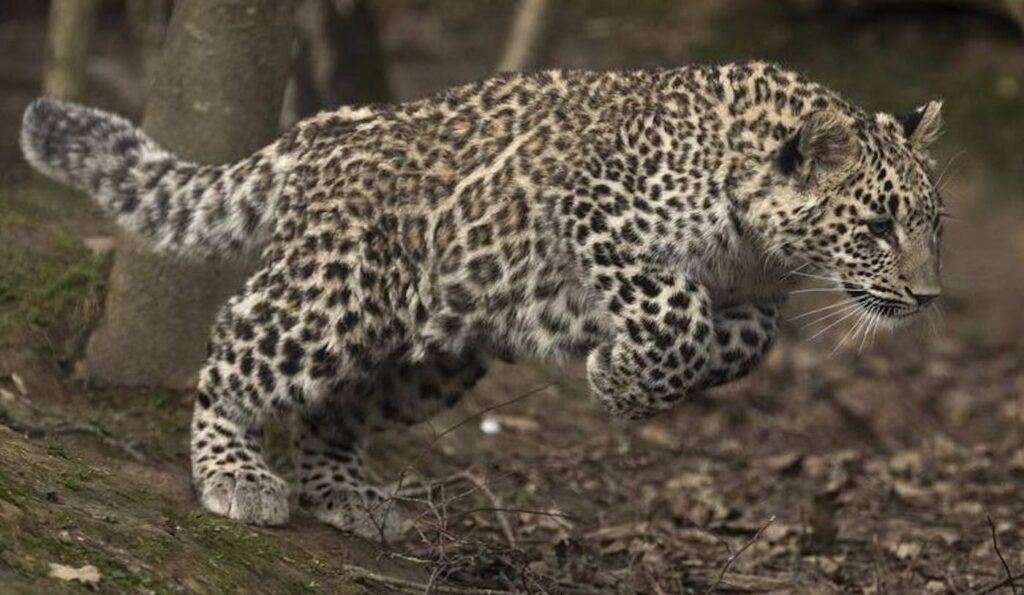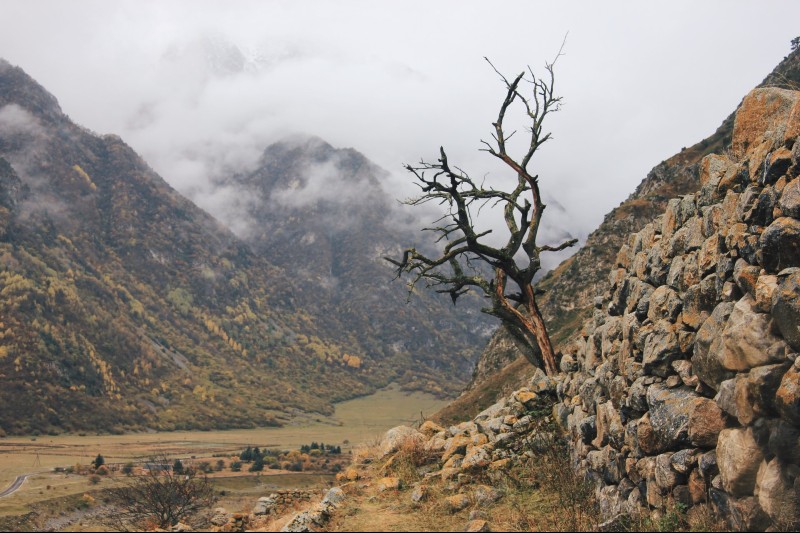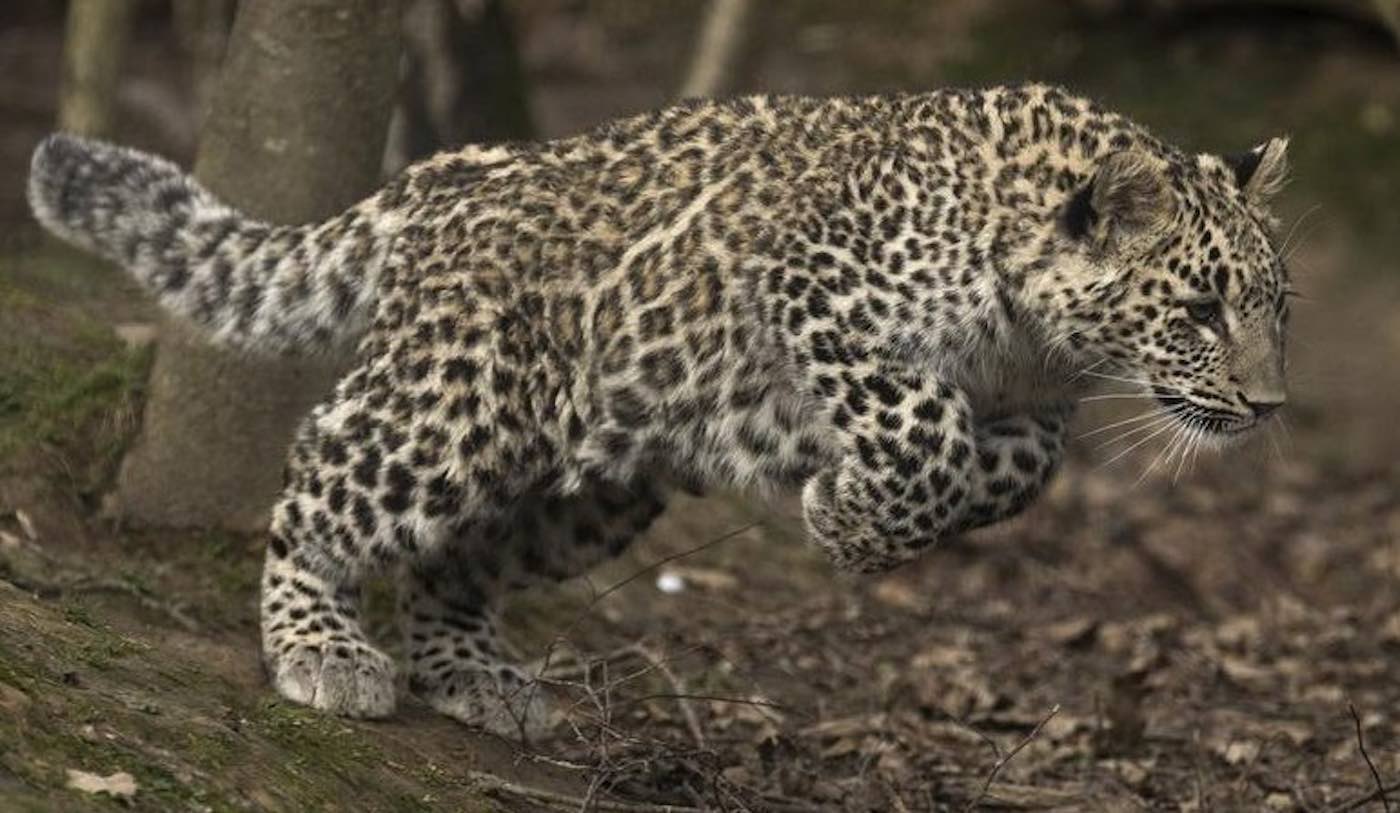Reprinted with permission from World at Large, a news website of nature, politics, science, health, and travel.

A pair of Persian leopards, a species that numbers less than 50 individuals in the Russian Federation, have been released as part of a WWF captive breeding program to try and revitalize a declining species.
Kodor (male) and Laba (female) were born and brought up in a special leopard breeding and training center in Sochi National Park, which was established in the Caucasus Mountains back in 2009.
They were released as adults, having learned indepedence, hunting skills, and socialization within the safety of captivity to ensure they stand a chance at surviving long enough to help the species recover.
“Kodor and Laba successfully passed all the exams, so we have no doubt that they will adapt perfectly to the natural environment. Taking into account that two males (Akhun and Artek) are already living on the territory of the Caucasus Reserve, and another one was released today, we hope that this year a pair can be formed that will bring the first kittens born in the wild,” said Dmitriy Gorshkov, Director of WWF-Russia.
This is the organization’s third successful reintroduction of leopards into the Caucasus, but it was a record that wouldn’t last long, as merely five days later, on August 25th, two more charismatic felines lept from wooden cages into the Russian wilderness.
Gorshkov spoke beautifully regarding the release of Baksan (male) and (Agura) and what it means to the natural heritage of the Caucasus as well as to the Russian culture.
“We not only return two fabulous graceful cats, but we are bringing back the symbol of the Caucasus. Leopards are the ones to bring together a lot of people from across the country and unite them with one aim. This release and the reintroduction program itself shows the world that humanity has realized the mistakes of the past and is ready to fix them,” he said at the release.
The symbol of the Caucasus

The four leopards, which when combined with another three who were released in 2016—the first as part of the Sochi reintroduction program, and joined by another solitary female in 2018, may have increased the number of leopards in the biosphere of the famous mountain range by 20%.
RELATED: Watch These Ingenious Rescuers Save a Leopard from Drowning in a 15-foot Well
Ecologists working on the program note that the Caucasus Biosphere Reserve is ideal leopard habitat that also represents one of the largest stretches of unbroken forest in Russia.
Once widespread across almost all of Asia, Eurasia, and Africa, the leopard, a secretive and wide-ranging cat, has declined considerably.
They possess all the traits that make it difficult for predators to survive in the Anthropocene, including long-term pregnancies and childhood characterized by small litter numbers and long periods of time spent dependent entirely on the mother.
MORE: First Scientifically Confirmed Images in 100 Years: The Awe-Inspiring, Elusive Black Leopard
They also require huge tracts of territory, plenty of shelter in forests or mountains, and plentiful species of big game to prey on.
Despite the leopard sitting in the Acacia tree being one of the quintessential images of the African savannah, there’s a very large stronghold of leopards in northeast and northwest Iran, upon and beyond the Zagros and Alborz Mountains.
The subspecies is known as panthera pardus tulliana, meaning Anatolian or Turkish leopard, though it may actually be extinct in Turkey.
Primary drivers of the animal’s decline into endangered status on the IUCN Red List has been reduction in habitat and poaching due to its habit of livestock hunting.
CHECK OUT: Caring Conservation Programs Have Prevented At Least 48 Animal Extinctions, Says Study
This unfortunate but inevitable conflict between predator and domesticated animal has meant that Russian wildlife agencies have to take into account shepherds and farmers when drafting reintroduction plans.
“WWF-Russia conducts systematic and regular work with the locals, telling them about the Leopard Reintroduction Program, rules of behavior when encountering predators, safe cattle grazing, etc.” says Valeriy Shmunk, Director of Russian Caucasus Ecoregional Office WWF-Russia. “This is a complex work aimed at forming a positive attitude to the leopard, which will allow people and wild cats to live in peace and harmony.”
With many leopard populations existing in conflict zones such as Afghanistan, Iraq, and Yemen, the faster that Russia can restore her population of p. pardus tulliana, the greater the chance the species will survive.
Be Sure And Share This Stunning Story With Your Friends On Social Media…




















